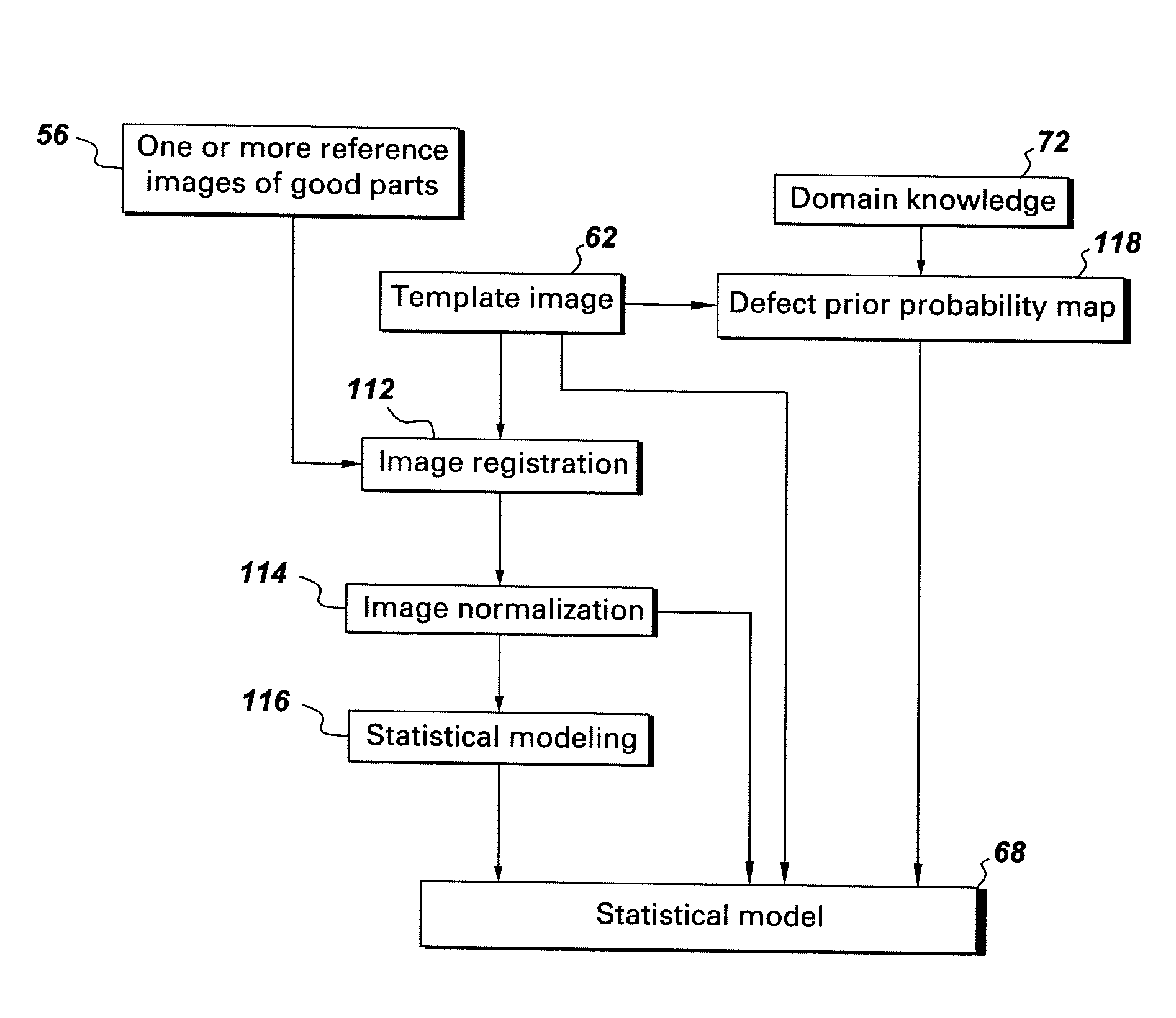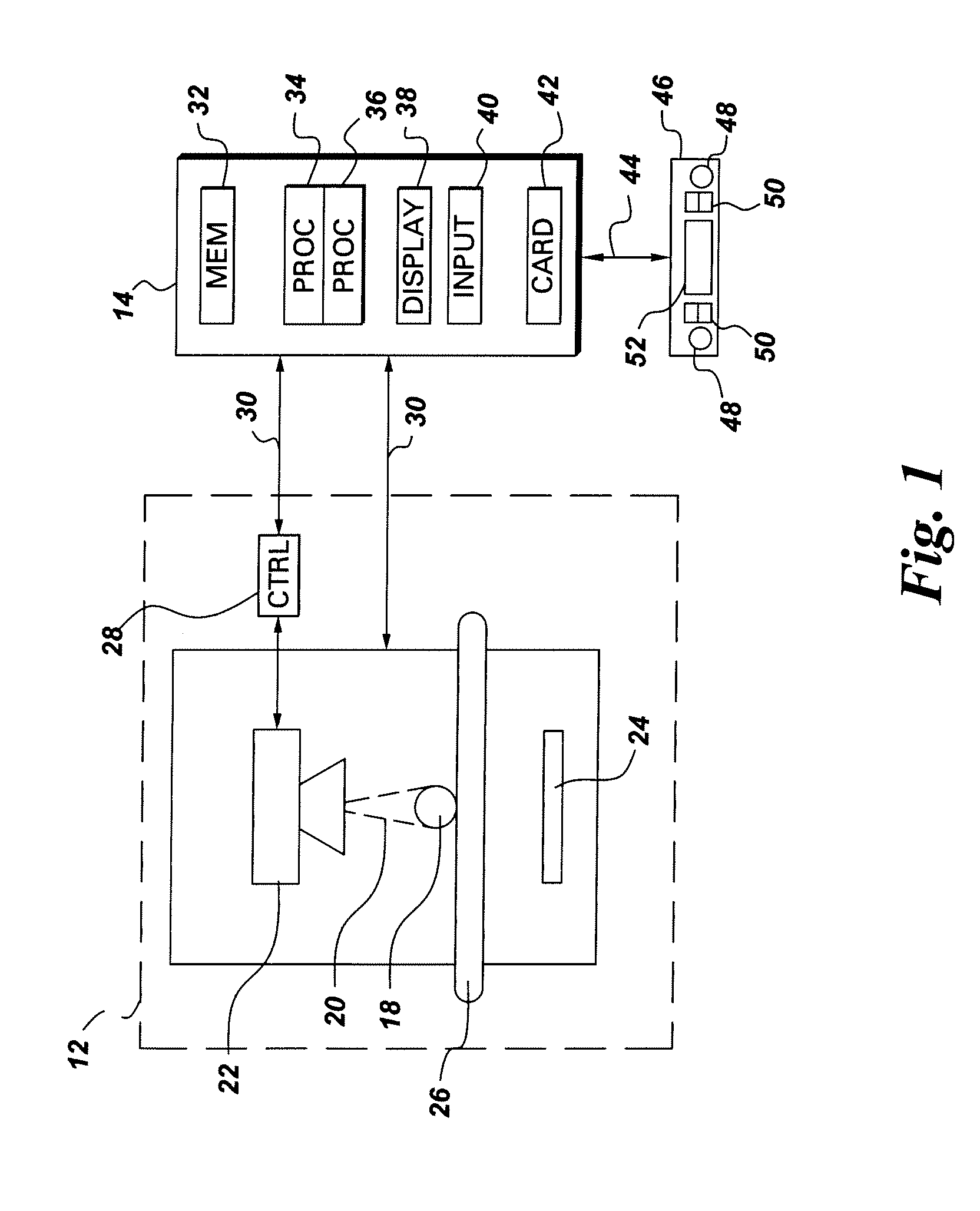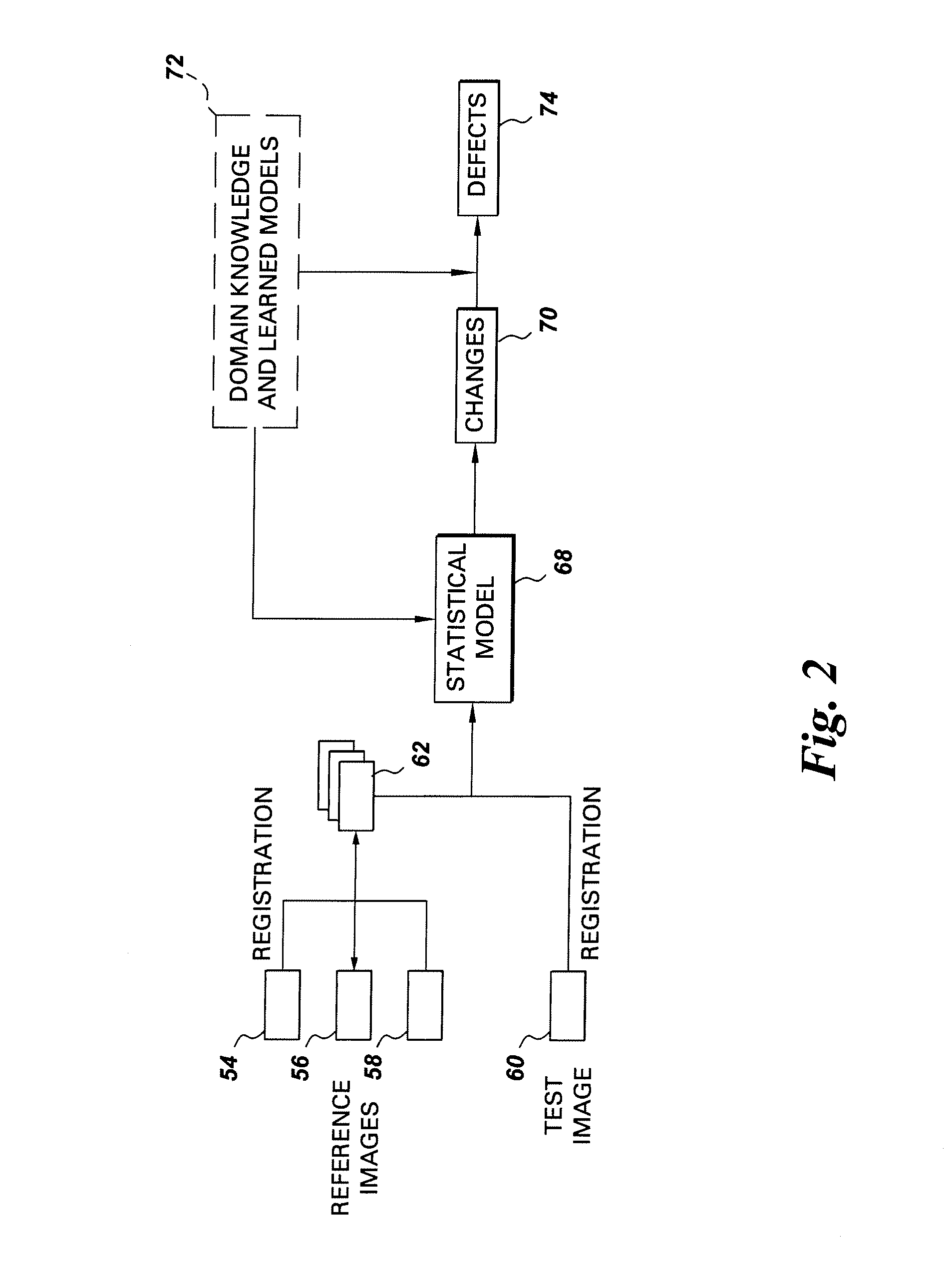Method and System for Identifying Defects in NDT Image Data
- Summary
- Abstract
- Description
- Claims
- Application Information
AI Technical Summary
Benefits of technology
Problems solved by technology
Method used
Image
Examples
Embodiment Construction
[0016]FIG. 1 is an illustration of an exemplary radiographic inspection system for processing a radiographic image of a scanned object. It should be noted that although the illustrated example is directed to radiography, the present invention is equally applicable to other inspection modalities, non-limiting examples of which include X-ray, CT, infrared, eddy current, ultrasound and optical. Referring to FIG. 1, the radiographic inspection system 10 includes a computer system 14 adapted to be in signal communication with an imaging system 12 via a communication bus 30. A real-time image controller 46 is adapted to be in signal communication with the computer system 14 via another communication bus 44. The imaging system 12 is configured to acquire and output radiographic image data corresponding to a scanned object 18 via an imaging device 16. The imaging system may include, but is not limited to, an X-ray system, a CT system, an infra-red system, an eddy current system, an ultrasou...
PUM
 Login to View More
Login to View More Abstract
Description
Claims
Application Information
 Login to View More
Login to View More - R&D
- Intellectual Property
- Life Sciences
- Materials
- Tech Scout
- Unparalleled Data Quality
- Higher Quality Content
- 60% Fewer Hallucinations
Browse by: Latest US Patents, China's latest patents, Technical Efficacy Thesaurus, Application Domain, Technology Topic, Popular Technical Reports.
© 2025 PatSnap. All rights reserved.Legal|Privacy policy|Modern Slavery Act Transparency Statement|Sitemap|About US| Contact US: help@patsnap.com



